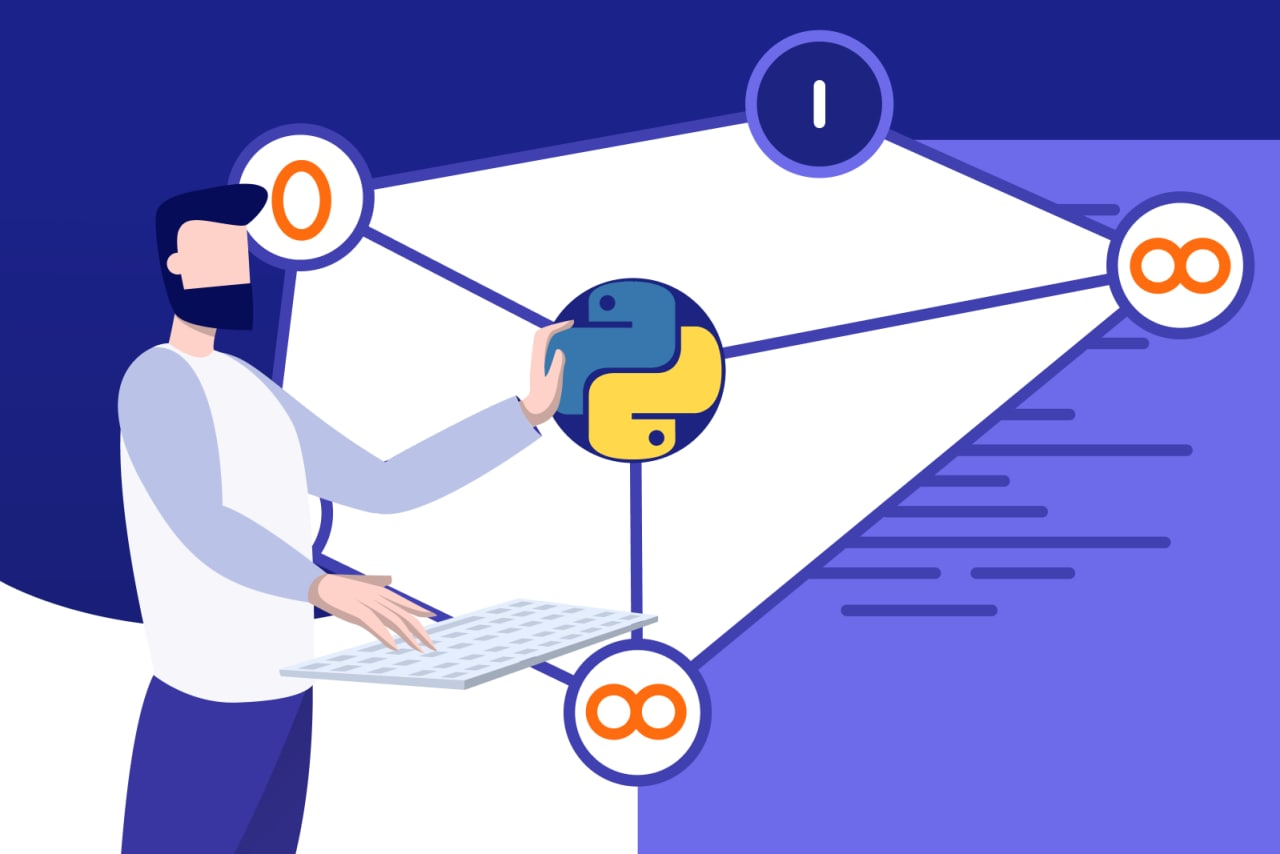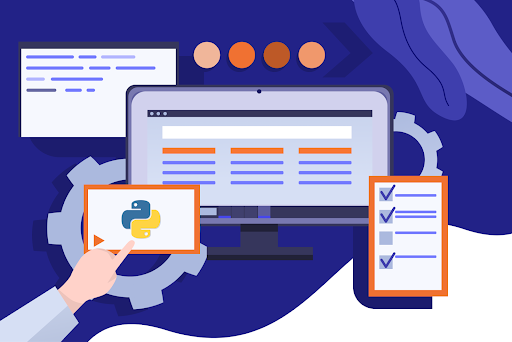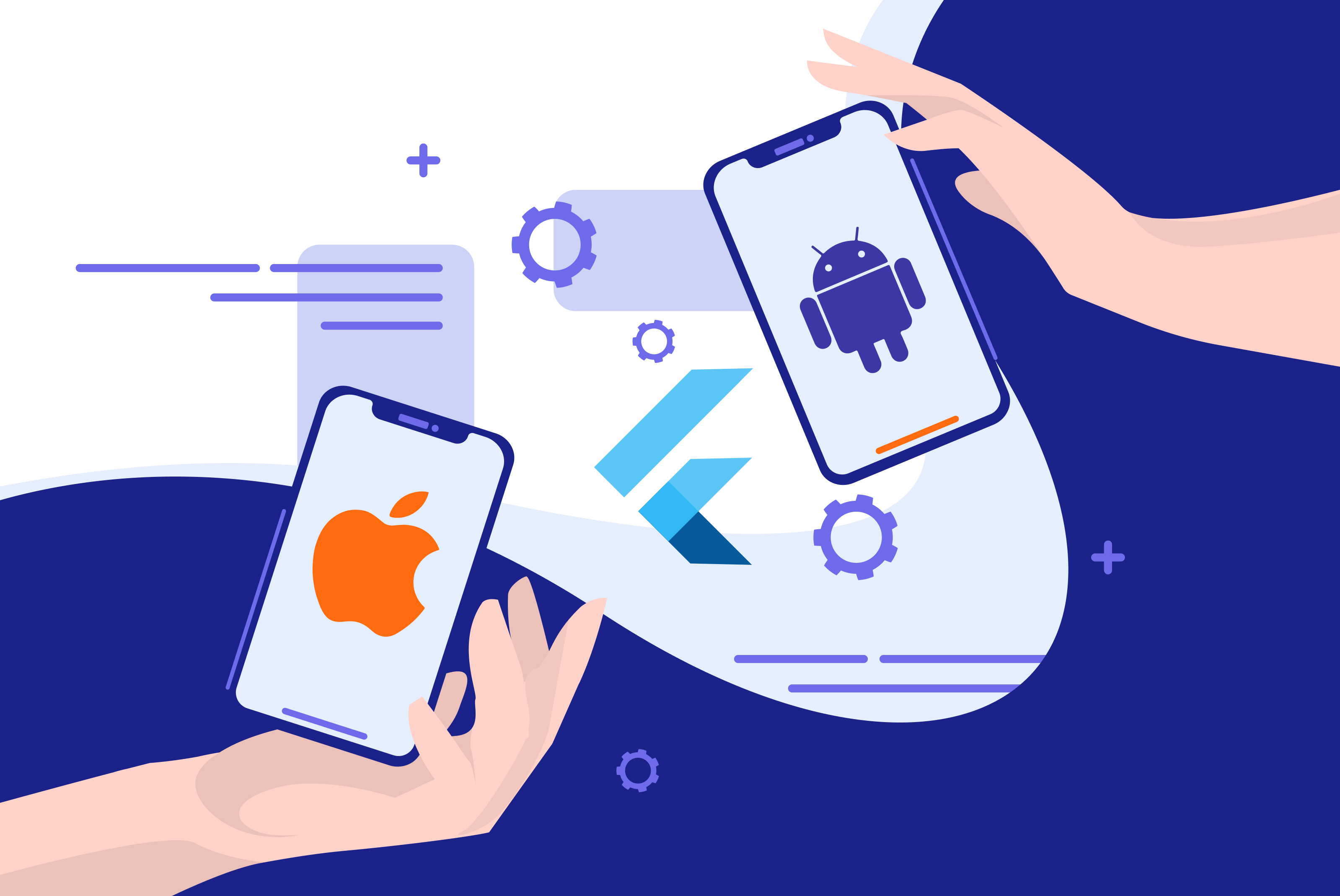
Learn how to create a market-ready application
Based on changing consumer trends, it is important for companies to stay on top of modern consumer trends. Businesses today have access to a wide range of technological tools that enable them to enhance their reach and expand their customer base.
For the bulk of the digital era, websites were considered to be the most viable way for companies to maintain an active presence in the digital world. However, with the increasing propagation of smartphones, these trends are rapidly changing. Gone are the days when smartphones were tools for simple texts and calls. The modern digital evolution has converted smartphones into the center points of interaction and digital commerce. To take complete advantage of this emerging trend, it is important for companies to prioritize making smartphones a central part of their growth strategy.
Mobile applications have emerged as the cornerstone of this rapid growth. The customizability of mobile and web applications has been a central factor in creating streamlined customer experiences and opening up new market spaces.
Based on recent research by Statista, the number of smartphone users around the world has increased to over 3.2 billion. The figure reflects an astronomical rise over the previous years, making smartphones the most commonly used devices in the world. The average time spent on smartphones for the conventional user was tabulated at over 4 hours a day. This represents a massive increase compared to the statistical outlook in 2010.
Based on this monumental growth, it is clear that developing web applications is central to allow businesses to take advantage of the market and improve their positioning. But It is important for businesses to be mindful of certain key factors before they delve into the development process to ensure that they're able to increase their odds of success.
Before we delve deeper into what makes the applications special, let's explore what the research process for the applications looks like.
Exploring the Application Type
Before getting started with the development process, it is essential to take the time to explore the objectives of the evaluation. You don't want to invest in an application without knowing what public trends are. Having adequate research allows you to make informed decisions and have increased control over the development state of the application.
Application Dynamics
Figuring out all the details about user trends is the most important part of the strategic planning process for your application. Having a clear idea of what users want allows you to create the right product to meet expectations and enhance your odds of success. Here's how you can figure out the right application type to choose for development.
- Research the preferred developmental frameworks and their advantages. Feel free to explore Node.js, Angular.js, and other potential options and their advantages.
- Explore the growth rates of key user trends and areas to allow you to have a better understanding of the market dynamics.
- Learn more about emerging devices and their operational environments to have a clear idea about popular options.
Competitor Details
Having an in-depth understanding of competitors' performance can be a great way to know about the prospects of your own applications. Knowing more about usage statistics and user responses allows you to learn from other's mistakes and create a viable product. Make sure you research the following elements.
- Explore the key platforms your competitors are relying on for their applications.
- Analyze the market positioning of your competitors to estimate their fiscal performance and upside.
- Inspect their design elements to have an overview of emerging UI/UX trends that you can implement in your own company as well.
Application Platforms
Developing an application can take a major chunk of resources. Before you make the commitment to put in the resources to develop applications for all the platforms, it is essential to consider the developmental approach that you want to take. Whether that is an iOS launch, an Android launch, or a hybrid application, having the pre-emptive plan is central to a successful launch.
Here are some of the key factors to evaluate during the decision-making process.
- Explore the differences between hybrid applications and native applications to have a clear idea of the pros and cons.
- Evaluate the viability of the launch process based on your developmental expertise and financial resources.
Monetary Factors
The primary purpose of application development is to ensure that the application can eventually achieve monetization. To ensure that your application is able to actively start generating revenue, make sure that you explore the viability of monetization through the following variables.
- Researching the most viable monetization options between Ad Revenue, In-App purchases, and Subscription-based monetization.
- Explore the financial marketing models for your application based on the primary directive of your application.
- Evaluate the scalability of the application based on the market trends exhibited by key competitors.
Payment Management Planning
Integrating payment management solutions is central to the success of your application. Having simplified payment management can be a major difference-maker in your customer journey by providing them with diverse payment options. When considering the range of payment management options, make sure you tabulate for the following factors.
- Explore the most viable payment gateway for your application.
- Elaborate the transaction fee and other associated costs to your application.
- Define a clear financial policy to elaborate payment management process to your customers.
Managing Intellectual Property and Licenses
One of the biggest mistakes application developers make throughout the development process is to include copyrighted content in the application. Even though the application manages to slip through the layers and get published, application stores eventually take notice and take down the application.
To prevent such instances from occurring, make sure that you secure the required intellectual copyrights to your digital media and assets. Whether that is through the usage of Commercial free-to-use media or paid licenses, make sure that your intellectual property management is in order to reduce the odds of issues occurring in the future.
Vibrant Digital and Social Media Handles
In the age of social media, having a vibrant social media presence is central to a successful application launch. Developing active digital handles will allow you to connect with future users and integrate user input into the development and launch process.
Social media and digital marketing can also be a central tool in expanding the success of your application and extenuating your user base. Putting in the time to develop an authentic social presence can be a worthwhile investment that definitely pays off in the long haul.
Aside from the pre-development considerations, it is important to structuralize the launch process to ensure that your framework is optimized to handle the requirements of the application.
Structural Considerations During Application Development
Data Storage and Connectivity
Even though the development process of the application often starts with a relatively limited approach, the growth process can often witness an astronomical rise in the userbase. This makes it integral to devise the right structure to embed data storage and connectivity into your application.
For modern developers, it is important to consider scalability and consider incoming growth as a central facet of the business development process. Configuring the right servers can help developers scale to keep up with the growth of the application.
Having a solid cloud-server helps companies have efficient data back-ups while providing secure data management. Configuring the right data-handling procedures can allow companies to manage their growth without getting overwhelmed.
Comprehensive Security Considerations
With the increasing range of attacks and security threats being directed towards digital mediums, it is important for application developers to make considerations for security to ensure that customer data is secure through encrypted connections and solidified storage.
With the increasing threats to digital security and privacy, users are increasingly moving towards applications that provide them with a solid security mechanism. Whether it is through encryption or strong data storage policies, it is clear that in today's landscape, there can be absolutely no compromise on the security of the application.
Managing the Development Phase
The development phase often comprises strenuous activities where things start to heat up and expand to the next level. Throughout the process, it is important to follow through on the plan to ensure that you're able to conclude the development process within the timeline. Following through with the plan helps ensure that you're able to complete the project within the designated resources and timeline.
Here are some of the core aspects to manage in the development phase to ensure that you're able to seamlessly manage every element of the development.
Development Methodology and Progress Tracking
Whether you're working on the application by yourself or with an integrated team of developers, following through on a development methodology is essential to have a successful development process. Weighing in between a wide range of developmental strategies, including Kanban, Scrum, and Agile development, can be a great way to determine the best fit with your application development process.
Another supplementary cog of the development process is to ensure that every element of the progress is extensively tracked through tools, including Gantt Chart and Pert Chart, to constantly assess the development and progress of the project. Keep track of the development prevents developmental delays and allows seamless time progression.
User Interface Design and Creation
The user interface creation process begins with an evaluation of the central facets of the design process and includes the creation of a viable mockup to imagine the primary UI. The UI design is followed through with the development of the actual front-interface.
Based on the human inclination to be drawn to vivid graphical elements, an efficient approach can be to focus on iterative development of the visual model using user-feedback to have a clear focus of the end product while actively considering the broader elements of the application.
Coworking-Based Model
Iterative working models are highly limited due to their gradual nature. People within the team often have to wait for the completion of the previous module to expand the working process on the module. Relying on a coworking module allows simultaneous management of the project elements by dividing the project into smaller parts and implementing the divide and conquer strategy. Similar to the backend and frontend divide between the workflow, having a coworking model can speed up the development process and fit in perfectly in methodologies like Scrum.
Testing and Evaluation
For successful project conclusion, the development process just marks the culmination of a single aspect of the development process. The broader completion of the application cannot be concluded without extensive testing and evaluation of the application. The testing and evaluation process must be centered around revisiting the predefined guidelines to ensure that the technical and practical requirements are properly satisfied.
Post Launch Maintenance
The application development process is not concluded, with the eventual development being concluded. The post-development process comprises extensive maintenance and support to ensure that the application is able to realize its true potential and become its best self.
Here are some of the considerations that can help you create an exceptional application experience.
Considering Customer Reviews
Customer reviews are a vivid reflection of your customer journey and product experience. Your customers will let you know how they feel about your product through their reflections on social media, application environments, and other platforms. There will definitely be people that will have feedback you can incorporate into your working process.
Taking the feedback seriously and addressing the raised concerns will help you gain customer traction and expand your customer base. Heartfelt customer interaction will help you improve your customer retention rate and expand your potential customer base.
Monitoring Updates and Security Elements
The policy structure of leading application platforms can have variations in time. Make sure that you're able to answer imminent security threats and customer requirements by actively updating your application with the required updates over time to curate an exceptional customer journey. Monitoring for updates and security can also prevent any major issues from impacting the performance of your application.






